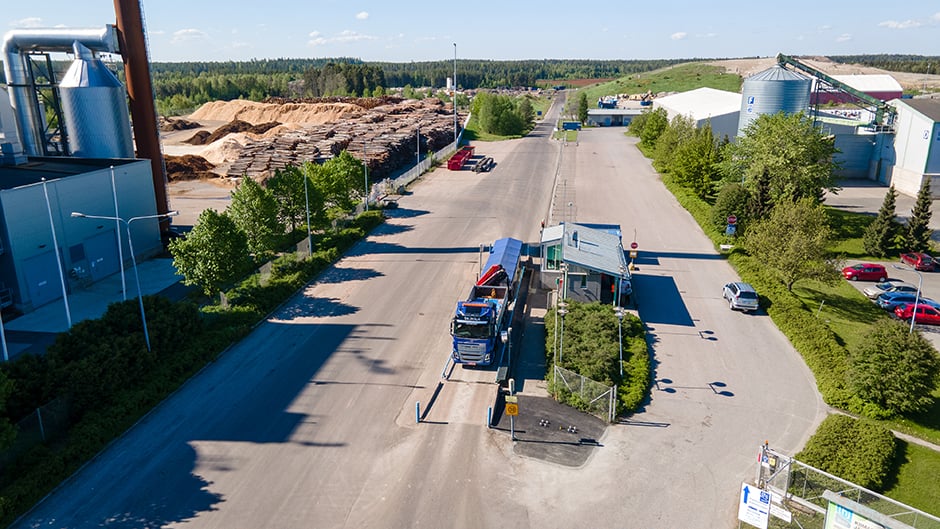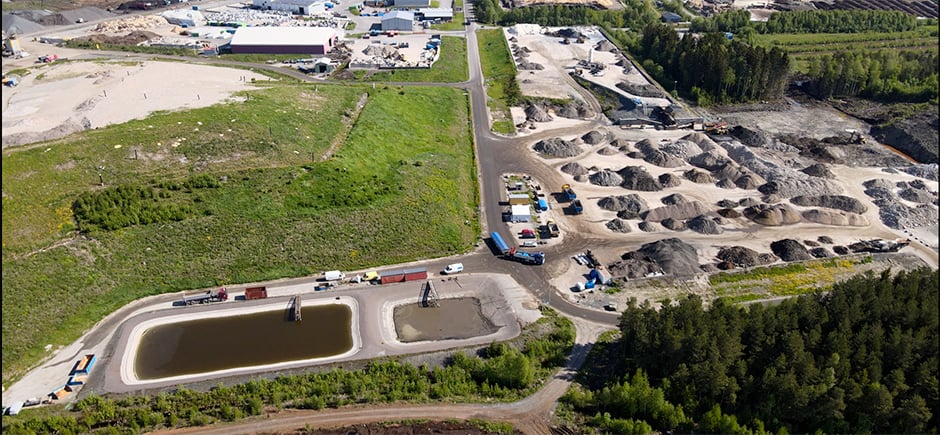mScales weighing service / Blog / Harnessing the Power of Weight-based Material Flows: A New era for supply chain operations
Harnessing the Power of Weight-based Material Flows: A New era for supply chain operations
In the fast-paced logistics and supply chain management world, innovation isn't just nice to have - it's a survival strategy. And one of the most exciting advancements shaking up the industry today is the concept of weight-based material flows. It's completely understandable if you're puzzled about what this means. Trust me, you're not the only one in that boat. This breakthrough approach to supply chain operations has yet to be widely understood, but its potential is enormous. That's why we're here to illuminate this game-changing strategy and how you can harness its power to optimize your supply chain operations. In this blog, we'll walk you through the concept, benefits, and practical applications of weight-based material flows.
Embracing the future of supply chain management
The world of supply chain management is no stranger to change. From the advent of containerisation in the 1950s, which radically transformed the shipping industry, to the rize of e-commerce that has necessitated lightning-fast, last-mile delivery, adaptability is in the DNA of every successful supply chain operation.
But today, we stand at the precipice of a new era that may well be as transformative as any that has come before. It's an era defined by the convergence of advanced technology and an urgent need for sustainable practices, and weight-based material flows come into play here.
At its core, weight-based material flow is about leveraging data - a resource as valuable as it is abundant in the modern supply chain. Every day, countless tons of goods move from manufacturers to distributors, from distributors to retailers, and from retailers to end consumers. Each of these movements is a wealth of data waiting to be tapped. But until now, most supply chain operations have yet to fully capitalize on this data, focusing primarily on volume and ignoring the valuable insights that weight can provide.
.png?width=580&height=450&name=MicrosoftTeams-image%20(139).png)
And that's where the power of weight-based material flows comes in. By focusing on the weight of materials as they move through the supply chain, we can gain new insights into efficiency, cost, and sustainability. Weight data can help us optimize routes and loads, reduce wasted space, and even decrease our carbon footprint - a growing concern in a world increasingly aware of the impacts of climate change.
But this isn't just a theoretical concept. Businesses around the globe are already harnessing the power of weight-based material flows to optimize their supply chain operations. They use this strategy to reduce costs, improve efficiency, and promote sustainability. And as we move further into the 21st century, it's clear that this trend will only grow.
So, are you ready to embrace the future of supply chain management? It's time to dive deep into the world of weight-based material flows. In the coming sections, we'll explore this concept in detail, examine its many benefits, and see how real-world businesses implement it. It's a journey that will revolutionize the way you think about supply chain operations, and we can't wait to get started.
Harnessing the power of weight-based material flows to optimize supply chain operations
Managing a supply chain without a clear understanding of material flows is like running a marathon blindfolded. Businesses lack visibility of their destination, obstacles along the way, and even their progress. It's a challenging situation faced by many.
Fortunately, the concept of weight-based material flows offers a solution. It provides businesses with a comprehensive view of their supply chain operations. By focusing on the weight of materials moving through the supply chain, companies can gain valuable insights to drive significant optimization.
So, how does it work? It's about collecting and analyzing data on the weight of materials at every step of the supply chain. This includes the weight of raw materials, components, finished products, and even waste. Every gram of material that enters, moves within, or exits the supply chain is accounted for.
But this isn't just about collecting data for data's sake. It's about using this information to make smarter decisions. For instance, businesses can optimise their transportation by understanding the weight of materials. They can ensure trucks are loaded to their total capacity, reducing the number of trips needed, thus saving fuel costs and reducing carbon emissions.

Moreover, by tracking the weight of waste materials, businesses can identify opportunities for waste reduction or recycling, contributing to sustainability goals. They can also better predict demand and manage inventory, reducing storage costs and improving customer service.
But the benefits of weight-based material flows continue beyond the operational level. They also extend to the strategic level. By providing a holistic view of the supply chain, this approach allows businesses to identify bottlenecks, inefficiencies, and opportunities for improvement. It supports strategic decision-making, helping companies to align their supply chain operations with broader business objectives.
Of course, harnessing the power of weight-based material flows is challenging. It requires investment in data collection and analysis capabilities and may require changes to existing processes and systems. But the rewards can be significant for businesses willing to embrace this approach.
So, as we move forward into an era of data-driven decision-making and sustainable operations, it's clear that weight-based material flows have a critical role to play. They represent a powerful tool for optimizing supply chain operations, driving cost savings, and promoting sustainability. And for businesses looking to stay competitive in today's challenging landscape, they're an opportunity that needs to be more significant to ignore.
Understanding the concept of weight-based material flows
In the vast supply chain management landscape, weight-based material flows stand as a beacon of potential, a game-changing concept waiting to be fully utilised. But what does it mean exactly? In essence, weight-based material flow is the method of tracking and analysing the weight of materials as they move through different stages of the supply chain.
From the moment raw materials are sourced to the time finished products reach the hands of the consumer, countless transactions take place. Each transaction involves material movement, and each activity has a weight. Traditionally, supply chains have focused on volume, counting the number of units moving through the system. But weight-based material flows shift the focus to the mass of these units, opening up a whole new world of data.
Think of it like this: a truckload of feathers will have a vastly different weight from a truckload of bricks, despite both taking up the same volume. By considering the importance, we can optimize the use of resources, such as transportation and storage, leading to greater efficiencies and cost savings.

Moreover, weight-based material flows are not just about tracking products. They're also about monitoring waste and by-products, an essential factor in the drive towards more sustainable business practices. By understanding the weight of waste produced at different stages of the supply chain, businesses can identify opportunities for waste reduction, contributing to environmental sustainability.
Weight-based material flows provide a more granular, comprehensive picture of supply chain operations. They offer valuable insights leading to more efficient, cost-effective, and sustainable practices. As we delve deeper into this concept, we'll explore how businesses can harness this power to optimize their supply chain operations. But for now, it's enough to understand that weight-based material flows represent a significant shift in how we think about and manage supply chains. The future is heavy in the best possible way!
The benefits of embracing weight-based material flows
In today's world, where effectiveness and eco-friendliness are highly valued, material flows based on weight have become the top choice for supply chain management. This innovative approach can bring about a range of advantages that can revolutionize your business operations. Here's how.
- Firstly, cost savings. By tracking the weight of materials, businesses can optimize the utilisation of transportation and storage resources. Less space wasted means fewer resources used, and that translates directly into cost savings. Plus, it helps companies avoid overstocking or understocking, ensuring they have the proper inventory to meet demand, thereby reducing holding costs.
- Secondly, improved efficiency. Weight-based material flows enable businesses to identify bottlenecks and inefficiencies in their supply chain operations. This could be a process that generates excessive waste or a transportation route that needs to be fully utilized. By pinpointing these issues, companies can take corrective action, streamline their operations, and ultimately improve their bottom line.
- Thirdly, enhanced sustainability. In a world increasingly conscious of environmental impact, weight-based material flows allow businesses to reduce their carbon footprint. By minimizing waste and optimizing transportation, companies can decrease their environmental impact. Plus, tracking the weight of garbage can identify opportunities for recycling or reuse, promoting a circular economy.
- Lastly, data-driven decision-making. With weight-based material flows, businesses can make informed decisions based on factual data. This allows for predictive analysis, risk assessment, and strategic planning. It's no longer about guessing or following gut instincts – it's about leveraging data to drive growth and profitability.
In essence, embracing weight-based material flows is like gaining a new lens to view your supply chain operations. It provides a more nuanced understanding of your processes, allowing for optimization at every level. The benefits are manifold, from cost savings and improved efficiency to enhanced sustainability and data-driven decision-making.
Real-world examples of weight-based material flows in action
Weight-based material flows are more than just a concept—they are actively being employed in global supply chains, and their impact is significant. Let's explore real-world examples and examine how companies harness the power of weight-based material flows to optimize their operations.
For years, businesses have emphasized eliminating redundancy in sourcing to cut fixed costs and foster efficiency. This strategy reduced flexibility and effectiveness, a tradeoff that became painfully apparent when supply chain disruptions occurred due to the pandemic.
Companies responded to these disruptions by seeking innovative ways to design supply chains that are both cost-effective and resilient. These measures included implementing risk-focused analytics engines, simulations, and end-to-end transparency. Achieving this balance is challenging, requiring a thoughtful analysis of scenarios and economics. Yet, the rewards of a resilient supply chain can be substantial, offering considerable value in everyday environments and during significant disruptions.
Weight-based material flows can significantly impact transportation costs, as the weight of materials determines the cost of transportation. Supply chain managers must optimize the movement of materials to minimize transportation costs while maximizing efficiency and sustainability.
The management of weight-based material flows also influences the design and operation of warehouses, manufacturing facilities, and transportation infrastructure due to space and equipment requirements. Heavier materials occupy more space and require more handling equipment, which can affect inventory turnover rates and the overall efficiency of the supply chain.
Resilient companies absorb shocks in supply chain operations more effectively using buffers and strategic inventory. For instance, in the event of significant disruptions, they minimize the risk of a complete network shutdown by flexibly switching from primary material flow paths to secondary ones and changing suppliers.
The ecological implications of weight-based material flows are significant, too. They can significantly affect the supply chain's carbon footprint and potentially increase regulatory requirements and costs. Companies that effectively manage their weight-based material flows stand to gain not only in terms of operational efficiency but also in environmental stewardship.
These examples illuminate the importance of harnessing the power of weight-based material flows in real-world scenarios. As we move forward, it is clear that companies that successfully implement these practices will be well-positioned to weather future disruptions and maintain their competitive edge.
Frequently Asked Questions
How does weight-based material flow work in practice?
Weight-based material flow is a practical approach to managing and optimizing supply chain operations, and it all boils down to an understanding of weight as a critical factor in the flow of materials.
In practice, the first step is tracking. Every item in a supply chain has a weight, which is meticulously recorded at each stage, from sourcing raw materials to delivering finished goods. Advanced technologies like Internet of Things (IoT) devices and digital weighing scales are often used to ensure precise tracking.
Once the weights are recorded, they are fed into a supply chain management system. This system uses algorithms to analyze the data and generate insights. For instance, it can predict demand based on historical weight data, calculate optimal transportation routes based on weight limits, or identify inefficiencies in storage and handling due to the weight of materials.
The insights generated by the system guide decision-making processes. Managers might adjust procurement schedules, rearrange warehouse layouts, or redesign transportation routes based on weight-based data. The goal is always to optimize the flow of materials, minimize costs, and maximize efficiency.
Finally, the system provides feedback, enabling continuous improvement. By comparing predicted outcomes with actual results, businesses can refine their algorithms, fine-tune their operations, and continually improve their supply chains.
Weight-based material flow is a dynamic process. It involves tracking, analysis, decision-making, and continuous improvement, all geared towards optimizing supply chain operations. When implemented correctly, it's a game-changer for businesses looking to navigate the complexities of modern supply chains.
What types of industries can benefit from weight-based material flow optimisation?
Weight-based material flow optimization is not limited to a single industry. It is a versatile strategy that can be advantageous across various sectors. Here are a few industries that stand to gain significantly from employing this approach:
Manufacturing: Manufacturing industries, where products are made in bulk, can significantly benefit from weight-based material flow optimization. Companies can streamline operations, minimise waste, and improve overall efficiency by considering the weight of raw materials, finished goods, and waste products.
- Retail: Retailers, particularly those in the grocery and general merchandise sectors, can use weight-based optimisation to manage inventory effectively, reduce transportation costs, and enhance customer service.
- Logistics and Transportation: These industries deal with moving goods of varying weights daily. Weight-based optimization can help to plan efficient routes, manage fuel costs, and comply with weight restrictions on roads and bridges.
- Construction: The construction industry uses many heavy materials, like cement, steel, and wood. Understanding and optimizing weight-based material flows can improve project planning and cost management.
- Waste Management: This industry deals with the collection, transportation, and disposal of waste, all of which are weight-based activities. Effective weight-based optimisation can enhance waste collection schedules, disposal methods, and recycling processes.
- Healthcare: Even in the healthcare industry, where supplies range from lightweight pharmaceuticals to heavy medical equipment, weight-based optimisation can help in managing inventories, reducing waste, and ensuring timely delivery of medical supplies.
Weight-based material flow optimisation has broad applicability across many sectors. By harnessing its potential, industries can enhance efficiency, minimize costs, and ultimately improve their bottom line.
In the ever-evolving supply chain management landscape, weight-based material flow is a powerful tool to enhance efficiency, reduce costs, and optimize operations. From understanding the concept to witnessing its implementation in various industries, it's clear that harnessing the power of weight-based material flows can be a game-changer. As we navigate the complexities of modern supply chains, embracing this innovative approach could be the key to staying resilient, competitive, and profitable. Remember, a well-oiled supply chain isn't just about moving materials from point A to point B—it's about doing so as efficiently and cost-effectively as possible. And that's precisely what weight-based material flows aim to achieve. Here's to the future of supply chain operations, where weight isn't just a number—it's an opportunity for optimisation!
Let´s discover together the benefits to your business!
Contact us
Mikko Kähkönen
Vice President of Sales & Marketing, mScales
+358 40 195 2527
mikko.kahkonen@tamtron.com


